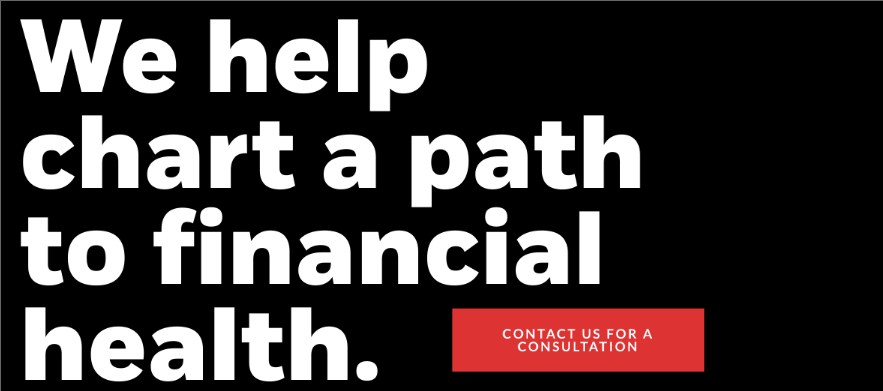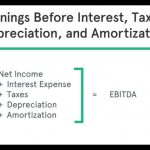Early Stage Startup Revenue Milestones and Metrics – 10k Per Month
As a startup emerges from its earliest stages, achieving key revenue milestones and tracking critical metrics become paramount for driving growth. While initially focused on building a minimum viable product and assembling a founding team, startups must quickly shift attention to generating sales. If you are fundraising for your startup, investors will want to see certain milestones such as proving your concept’s demand, creating a Minimum Viable Product (MVP), and gaining early users. Generate revenue to show your business model works and expand your team with skilled members. Secure partnerships, demonstrate scalability, and get endorsements from industry experts. Protect your intellectual property, comply with regulations, and achieve strategic business goals.
What are startup metrics and milestones?
Startups closely track metrics and milestones to gauge performance and validate strategies. Metrics are quantitative measures that provide insights into critical areas like revenue, growth rates, customer retention, and satisfaction. These numerical indicators reveal whether a startup achieves product-market fit, identifies scaling bottlenecks, and builds a sustainable business model.
Milestones represent specific qualitative goals and achievements that mark progress along a startup’s journey. These include product launches, landing initial customers, securing significant partnerships or investment rounds, and other critical checkpoints. Milestones demonstrate advancement and build credibility with stakeholders.
For early-stage businesses, growth is the lifeblood. It signals progress, validates your approach, and helps you course-correct when needed. Here’s how to measure and understand startup growth:
Tracking Growth Metrics:
There’s no one-size-fits-all approach, but several key metrics offer valuable insights:
- User Acquisition: Monitor the month-over-month or year-over-year change in active users. This reveals how quickly you’re attracting your target audience.
- Revenue Growth: Analyze revenue growth to understand if your business model generates enough income to sustain operations and fuel expansion.
- Burn Rate: Track your burn rate, which measures how fast you’re burning through capital. A high burn rate can indicate potential issues like low profitability or uncontrolled expenses.
Initial milestones center around proving product-market fit by acquiring the first 10, 100, or 1,000 paying customers. Startups obsessively monitor leading indicators like website traffic, free trial signups, and sales-qualified leads that forecast future revenue potential.
Once past the problem-solution fit stage with a steady stream of new sales, the focus shifts toward metrics like customer acquisition cost (CAC), lifetime value (LTV), monthly recurring revenue (MRR) growth rates, churn, and net revenue retention. Achieving LTV: CAC ratios above 3:1 demonstrate economic viability.
As the startup scales into millions of dollars of annual recurring revenue (ARR), the Rule of 40 (combining revenue growth rate and profit margin) becomes a critical performance benchmark. Top-line ARR growth of 40%+ or a combination of healthy margin and growth rate above 40% indicate efficiency.
Successful startups build their entire go-to-market strategy around these milestones and metrics. Each growth phase unlocks new KPIs that garner attention from investors evaluating future financing rounds and overall business trajectory. Hitting these targets proves market demand and a sustainable revenue model.
The ideal metrics depend on your specific business and stage of development. Here’s a breakdown:
- Early Stage: Focus on user acquisition to validate market demand.
- Growth Stage: Prioritize revenue growth to ensure financial sustainability.
- Later Stage: Balance revenue growth with a healthy burn rate to optimize profitability and growth.
$0/month
For most startups, acquiring the first paying customer represents a pivotal milestone—the base of the proverbial hockey stick. Getting someone to open their wallet validates that you’ve created something perceived as valuable enough to pay for.
However, that initial conversion unlocks the next challenge—figuring out how to replicate that success systematically. The real work begins by identifying what motivated that pioneering purchase. You must deduce whether pricing was the driver or detractor and whether customers would’ve bought sooner at a different price point.
As more buyers convert, patterns reveal why people buy, how much they’ll pay, their expected lifetime value, and reference ability. These critical insights enable optimizing your offering, pricing, and go-to-market to transform an encouraging anecdote into a repeatable sales process.
While that first sale sparks celebration, it merely cracks the door. The true milestone is codifying why customers bought into a reproducible acquisition model. That replicable framework paves the way for efficiently scaling from a handful of conversions to sustainable revenue streams as product-market fit is achieved.
$1K/month
While landing initial customers is promising, startups achieve their first truly meaningful revenue milestone by surpassing $1,000 in monthly recurring revenue (MRR). This marks tangible progress toward product-market fit.
Reaching $1,000 in monthly revenue is a significant milestone for a startup. It signifies you’ve built a product that resonates with customers and they’re willing to pay for it. However, this is just the first glimpse of product-market fit. You might still be refining your sales approach to optimize how you reach and convert those interested customers.
It represents exciting early growth – but not sufficient revenue for salaries or breathing room. This MRR is a stepping stone, proving the startup’s core value props but with ample room to enhance pricing, positioning, sales processes and overall scalability.
$10K/month
Reaching $1,000 in monthly revenue was a validation of your product’s potential. Now, achieving $10,000 a month signifies a significant leap forward. Here’s why:
- Stronger Product-Market Fit: This milestone indicates you’re on the right track towards product-market fit. You’ve found customers willing to pay, and you’re starting to refine your sales process to reach them effectively.
- Financial Viability: $10,000 allows you to potentially cover the cost of one full-time employee. For solopreneurs, it might even translate to profitability – though that’s uncommon for most startups.
- Survival Threshold: This isn’t just about revenue; it’s about survival. The initial $10,000 can be the difference between life and death for a startup.
The “Life Support” Number:
It’s important to remember that the ideal revenue target varies depending on your startup’s unique circumstances.
- Cost Structure: $10,000 can have a vastly different impact on a business with high overhead compared to one with minimal costs.
- Personal Needs: What constitutes financial security differs based on personal situations. $10,000 might be a luxury for someone with dependents, while a student entrepreneur might feel like a billionaire at that level.
Finding Your Minimum Viable Revenue:
Instead of focusing on a specific dollar figure, identify the absolute minimum revenue needed to keep your business afloat, even if it doesn’t cover your personal expenses. In my experience, this number often falls around $10,000, but it should be tailored to your specific needs. This “life support” number represents the smallest milestone that allows your startup to survive and grow.
$100K/Month
Manu Kumar, an investor at K9 Ventures wrote about this topic in a post on Medium stated that working with Lyft in its early days and one of the questions they would ask the founders often was: “When do you get to $100K/month in revenue?”
Cracking the six-figure monthly recurring revenue mark represents an epic achievement for any startup. At $100K+ MRR, the company has undeniable product-market fit and a proven sales engine. This is real, scalable money – enough to potentially support a 10-person team.
Founders should absolutely revel in this hard-fought victory. The blood, sweat and tears poured into reaching this point cannot be overstated. You’ve built something people want and figured out how to monetize it consistently. Kudos are deserved.
However, this milestone also presents new risks. With existential pressures relieved by steady, sizable income, motivation can wane. Startups at this stage often experience an energy lull as founders understandably seek respite from the intense hustle required to get here.
Yet maintaining focus is crucial, as evolving from six-figure MRR into the multiple seven-figure ranges demands even more entrepreneurial drive and personal sacrifice than earlier phases. Startups become complacent at their peril once achieving $100K MRR.
While this revenue level provides safety from acute existential threats, avoiding complacency proves challenging. Founders must dig deep, celebrate the win by all means, but then re-ignite startup hustle. Because the real work of scaling towards initial scale and long-term sustainability still lies ahead.
$250–500K/month
Reaching the revenue milestones of $250,000 or $500,000 per month signifies a significant leap for your startup. It’s a testament to several vital achievements:
- Nailed Product-Market Fit: Your product or service resonates deeply with your target audience, solving a real problem and delivering exceptional value.
- Optimized Sales Process: You’ve established a precise and repeatable sales funnel that consistently generates leads and converts them into loyal customers.
- Customer Fanaticism: Your product or service quality fosters customer loyalty and advocacy.
- Scalable Team: You’ve built a high-performing team capable of scaling across all departments – recruiting, technology/product, manufacturing, operations, finance, marketing, sales, and customer support.
The Importance of Smart Hiring:
While all areas are crucial, recruiting is a critical first step. Building a solid talent pipeline allows you to hire skilled individuals who can effectively grow their respective functions while maintaining a high bar for quality.
- Scalable Hiring: Develop efficient systems to identify and attract top talent while accommodating your increasing workforce needs.
- Quality over Quantity: Prioritize hiring exceptional individuals who align with your company culture and values.
By mastering these core elements, you equip your startup with a robust growth engine, propelling you towards sustained success and achieving those impressive revenue milestones.
Conclusion
Imagine how many groundbreaking ideas – the next Apple Computer or Airbnb – would have vanished prematurely if they lacked the runway to take flight. Those early months, even measured in single digits, can be the difference between a startup’s life and death.
While reaching the initial revenue target, whether it’s $10,000 or a different figure, might seem like a small milestone, it’s arguably the most crucial one. It provides the essential runway for a startup to stumble, learn, and ultimately take flight.
If you own a startup and have any questions about taxes or accounting issues feel free to reach out. Huckabee CPA offers free consultations.











